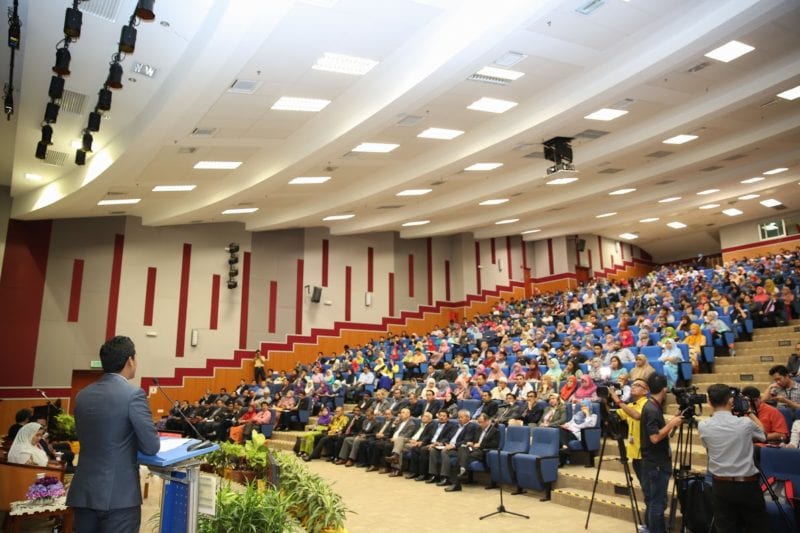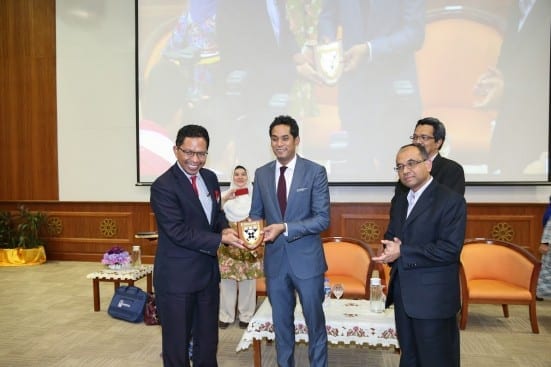KUALA LUMPUR, 3rd December 2014 – UTM International Business School and Harvard Business School Alumni Club of Malaysia had organized talk by YB Encik Khairy Jamaluddin, Minister of Youth and Sports. The talk entitled ‘Malaysia’s Human Capital Towards A High-Income Economy’ touched on Malaysian approach towards a high-income economy,
The Malaysian economy needs to see a balance between the capital economy and the people economy. The Capital Economy refers to economic management and policies from the macro perspective. This will facilitate a country to set its main targets and benchmark against other countries.
These include economic management based on capital, GDP growth, per capita income, private investment, capital market, corporate profits, sovereign and credit ratings, Bursa index and share value.
The People’s Economy on the other hand is an economy that is rakyat-orientated covering priorities and interests of the rakyat such as cost of living, household income, education opportunities, employment and business, quality of life, skills training, entrepreneurship as well as security and safety.
The biggest challenge for the government is to strike a balance between populist policies and economic policies that will benefit the nation, not immediately, but in the long run. In theory, the capital economy and the people economy cannot be separated; they have a symbiotic relationship.
One of the clearest indicators on this is the household debt ratio; which directly affects both quality of life and purchasing power. There’s been a sharp and marked increase in household debt to 86.8% of GDP. The biggest component is property loans.
Since 2012, the average cost of housing rose by 10%, in comparison to the rise of median income which was 8%. Average house price is 5.5 times income, unlike Singapore and UK with 5.1 and 4.7 respectively. The 2nd highest component is the motor vehicle loan, with Malaysians having to pay an average of 36 times their monthly salary to buy a car whereas in developed countries, the figure is just 12 months.
Youth bankruptcy is also a worry; with a 178% increase in the number of youths below the age of 25 declaring bankrupt when compared to last year.
Even with the indicators on capital economy mentioned before, Malaysians, especially its youth, are struggling to cope on a daily basis. It is important for the government to create more jobs and among those, high-paying jobs.
For Malaysia to become a high-income economy, Malaysia got to move from being the factory of the world to become the laboratory of the world. It needs a thorough transformation of the supply-side of the economy.
The New Education Blueprint identifies six factors of student aspiration, among them are knowledge, to ensure that every student is fully literate and numerate. Secondly, with thinking skills, to ensure that every child acquires life-long learning skills, with learning not restricted to the classroom or ending at school.
Thirdly, with bilingual proficiency, to ensure that every student is proficient in both Malay and English, so communication isn’t an issue at home or on the global stage. With it, come 11 shifts to transform our education system. These include leveraging on ICT to scale up the quality of learning; with the introduction of 1Bestari Net to provide internet access and virtual learning environment for all 10,000 schools, and a video library of lectures to so we can be consistent with best practices around the globe.





